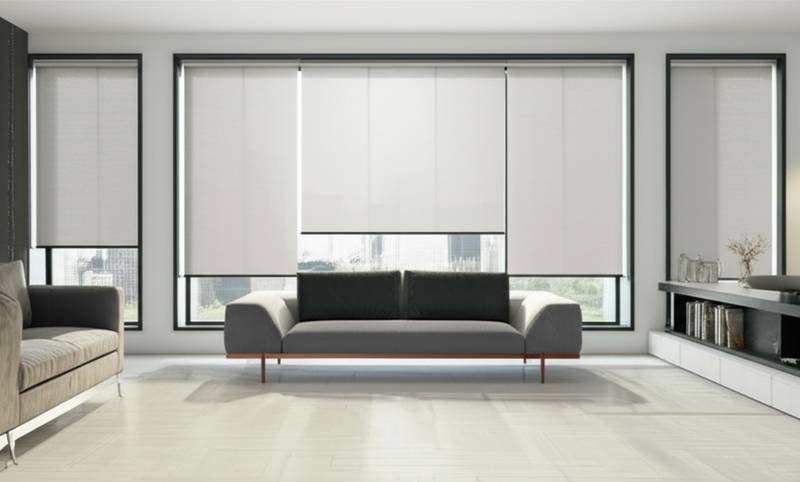Smart Blinds Reduce Air Conditioning Costs by 35 Percent Through AI Automation
Nearly half of homeowners possess at least one smart device, and many seek to expand their networks for greater comfort and efficiency. The emergence of smart blinds stands out as a transformative upgrade in modern living. These automated window coverings extend beyond basic voice-activated opening and closing. They employ intelligent sensors and adaptive software to regulate heat and light, thereby reducing air conditioning expenses by up to 35 percent.
Smart blinds promote intelligent energy management, customized comfort, and responsive environments that adapt without ongoing user intervention. Recent innovations merge automation with data-informed decisions, elevating simple window treatments into essential components of energy conservation.
Addressing Energy Loss Through Windows
Windows represent a primary avenue for heat gain and loss in residences. Intense afternoon sunlight streaming through glass elevates indoor temperatures, compelling air conditioning units to operate more intensively. At night, inadequately insulated windows permit conditioned air to dissipate, resulting in increased heating, ventilation, and air conditioning system activity.
Conventional blinds offer partial mitigation, yet they demand manual operation. Individuals often overlook adjustments when departing home or select suboptimal timings, fostering avoidable energy expenditure. Smart blinds intervene through automation and environmental monitoring to optimize light and temperature control with superior efficiency.
Intelligent Window Coverings That Anticipate Needs
Smart blinds incorporate sensors that monitor light intensity, ambient temperature, and occupancy status. They link to a central controller or mobile application, frequently interfacing with broader smart home infrastructures such as thermostats and illumination systems. By evaluating internal and external conditions, these devices autonomously reposition to preserve comfort levels and minimize energy consumption.
Consider blinds that descend incrementally as midday sun strikes west-oriented windows, sustaining cooler interiors without thermostat modifications. Subsequently, they ascend to admit twilight illumination and ventilation, upholding equilibrium while conserving power.
Such modifications occur seamlessly and iteratively, refining based on user routines and environmental patterns. With prolonged use, the system achieves heightened accuracy, yielding quantifiable reductions in cooling expenditures.
Trend 1: Artificial Intelligence for Customized Adjustments
Definition: Contemporary smart blinds leverage artificial intelligence to discern household behaviors and climatic variables.
Significance: This approach surpasses rudimentary timers or preset schedules. The technology discerns optimal adjustment moments aligned with actual occupancy, such as preempting window openings or solar exposure in specific rooms.
Illustration: Devices including the SwitchBot Curtain 3 and Somfy TaHoma system employ predictive algorithms. These adjust positions according to sunlight strength, temporal factors, and interior climate, ensuring steady comfort and diminished reliance on air conditioning.
Trend 2: Integration Within Comprehensive Home Networks
Definition: Smart blinds now synchronize effortlessly with holistic home setups, interfacing with temperature controls, lighting, and security protocols.
Significance: Coordinated operation enables the residence to function cohesively. For instance, upon detecting elevated temperatures, the thermostat triggers blind closure to impede heat ingress, alleviating pressure on cooling mechanisms.
Illustration: Platforms like Google Home and Apple HomeKit facilitate automated sequences for shades. Users configure blinds to activate at predefined temperature thresholds or deactivate alongside heating, ventilation, and air conditioning disengagement, thereby enhancing operational efficiency independently of manual oversight.
Trend 3: Prioritizing Energy Conservation in Design
Definition: Energy reduction emerges as a fundamental element rather than incidental advantage. Smart blinds incorporate monitoring utilities that project cumulative savings.
Significance: Residents gain visibility into automation's fiscal impact. These analytics empower fine-tuning of configurations for amplified conservation.
Illustration: Brands such as Eve and Lutron embed energy analytics in their applications. Interfaces display reductions in cooling requirements, furnishing users with evidence of advancements in eco-conscious habitation.
Trend 4: Aesthetic Harmony with Functional Innovation
Definition: Producers craft smart blinds resembling conventional alternatives, concealing sophisticated mechanisms within.
Significance: This design resolves the tension between aesthetics and utility. Options span diverse textiles, hues, and surface treatments to complement varied interior schemes.
Illustration: Hunter Douglas PowerView models unite refined fabrics with precise actuators and subdued mechanics. They integrate naturally into surroundings while serving as advanced thermal regulators.
Trend 5: Simplified Self-Installation Processes
Definition: Numerous smart blind frameworks accommodate straightforward setup and adaptation to legacy installations, obviating professional assistance.
Significance: Enhanced accessibility accelerates adoption in home automation sectors. Individuals retrofit motorized components onto prevailing blinds or drapes, circumventing wholesale replacements.
Illustration: Cost-effective add-ons like IKEA’s Fyrtur or SwitchBot’s curtain actuator enable automation of extant coverings in brief durations. This democratizes energy optimization for both proprietors and tenants.
Observable Outcomes in Daily Applications
Energy authorities project that solar heat penetration via windows contributes up to 30 percent of cooling demands. Automated shading during zenith solar periods substantially diminishes this burden. Paired with astute thermostats, residences sustain optimal conditions with reduced power draw.
Pioneering users note tangible enhancements. Lounges remain temperate, air conditioners engage less frequently, and invoices decline. Surpassing financial gains, occupants value self-regulating spaces that foster tranquility and poise.
Navigating Implementation Challenges
Despite evident advantages, certain residents delay due to initial investments or integration apprehensions. Fortunately, pricing has moderated, and protocols like Matter streamline cross-manufacturer compatibility.
Vocal interfaces, portable applications, and coordination centers render routine management instinctive. Portable variants with replenishable power sources suit transient dwellers. These developments position smart blinds as accessible enhancements for ease and ecological responsibility.
Additional Advantages for Enhanced Living
Smart blinds bolster seclusion, introduce dawn illumination softly, and shield furnishings from ultraviolet degradation. They mimic presence during absences to fortify security. Remote workers benefit from glare mitigation on displays, preserving concentration and output.
These incremental enhancements aggregate into profound lifestyle elevations. The focus transcends mere expenditure reduction; it encompasses cultivating adaptive, individualized domiciles.
Implementing Efficient Home Automation
Smart blinds reshape residential energy dynamics. They exemplify how perceptive technology yields concrete ease and fiscal prudence sans added intricacy. As connected apparatuses proliferate, synergistic potentials amplify, promising sustained advancements in intelligent habitation.
